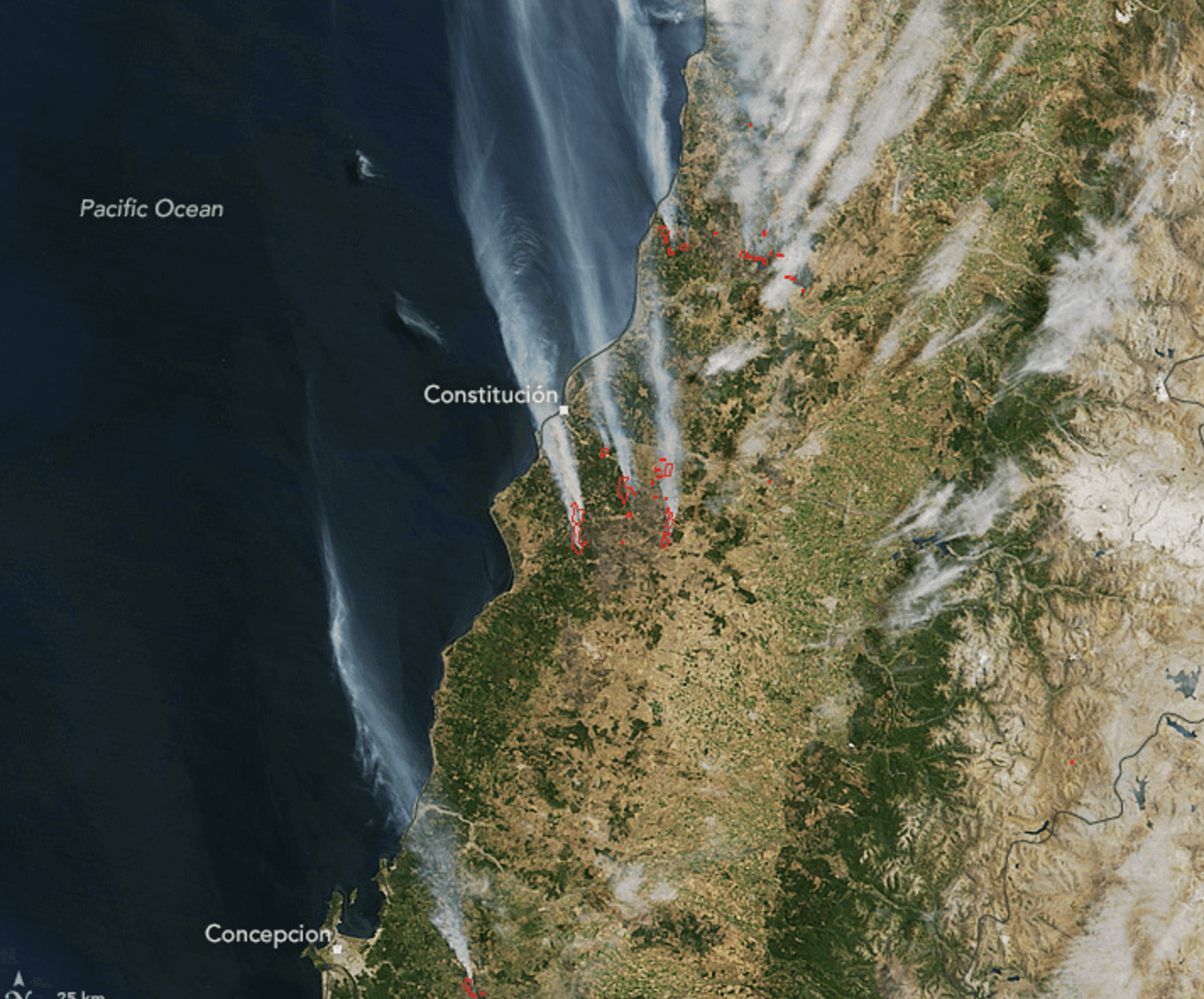Chile is no stranger to wildfires. During the dry season, fires are a usual occurrence in the South American country. But this year something unprecedented is happening. Since NASA began collecting data on wildfires in the Southern Hemisphere, they have never seen a fire season like this one.
Since the Moderate Resolution Imaging Spectroradiometer (MODIS) on NASA’s Aqua satellite began collecting data in 2002, fires have occurred in a fairly steady, cyclical pattern in Chile, rising during the dry season and falling during wetter months. Between 2003 and 2016, MODIS detected an average of 330 daytime fire hot spots throughout Chile during the month of January. In 2017, the number jumped tenfold.
“This is unprecedented from my perspective. The smoke plumes are huge in abundance and altitude,” said Michael Fromm, a meteorologist with the Naval Research Laboratory who has been studying satellite fire data for 15 years. “Fires have gotten much larger and much more energetic than typical for that area.”
The fires have so far killed 11 people, engulfed over 1,000 square miles, and have destroyed dozens of villages in its path.

Since these images were taken in late January, the fires have come under a degree of control. Chile President Michelle Bachelet has ended the state of emergency, but not after these flames caused over $330 million in damage.
These unprecedented fires come on the heels of historic fire seasons in California, parts of which share similar climate to Chile. It is another reminder of the kinds of devastation that climate change has wrought.

